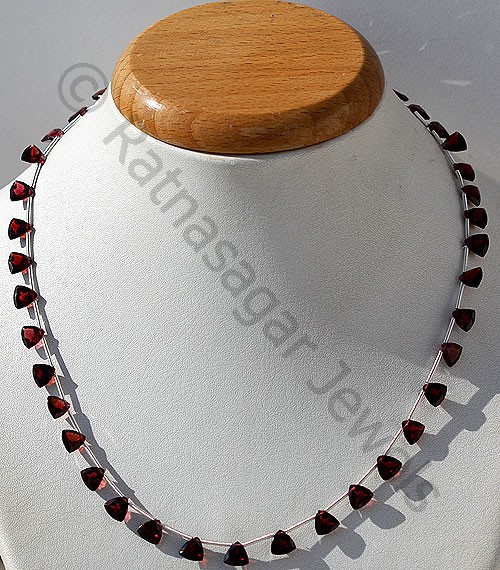Cutting or more commonly known as Lapidary is the process wherein a rough stone is turned into a gemstone. The process makes a gem assume a certain shape, brings out its luster and color and enables it to be set into jewelry.
Unlike Diamonds, colored gems possess variable optical properties and are not cut to a uniform ideal. A well-cut colored gem exhibits even color, an acceptable number of inclusions, good brilliance and shows the majority of carat weight when viewed from the top.
Broadly speaking, the many styles of gem cutting can be divided into:
· Faceted gems. Gems that have geometrically shaped and flat polished faces.
· Non faceted gems. Gems that do not have geometrically shaped flat polished faces.
The cut of a gemstones shape largely depends on the shape of the gem rough (the shape of the raw gem as it comes from the earth). For perfect and beautiful rough colored stones, the oval cut is generally the number one preference, as it maximizes beauty. The common shapes are the ultimate choice of the people, but there are not so common stones that deserve a special mention. One of which is – “The Trilliant Shape” and if you check you will see that this shape is available at the wholesales of gemstones- Ratna Sagar Jewels.

More about the Trilliant Shape:
The standard number of facets of a Trilliant cut gemstone is 43. Trilliant cut gemstones are based on a triangular shape. Usually with truncated corners and displaying a variety of facet designs, this cut creates a spectacular wedge of brilliant fire. The tips and culets of Trilliants are pointed and thin. Some jewelers only bezel-set Trilliants, though prongs that protect the tips work well and show more of the gem. As you look down through the gem, the culet generally appears centered in the middle of the table showing the pavilion of the gem with an attention to symmetry. When you examine the gem in profile, the girdle and table facet are generally parallel.
Trilliants work well with light-colored gems – such as Diamonds, Aquamarines, Beryl’s and White Sapphires – where cutters try to maximize brilliance. Inversely, some cutters use Trilliants to effectively lighten and brighten the appearance of darker gems such as Tanzanite, Garnet, Rhodolite Garnet and Amethyst. First developed in Amsterdam, the exact design can vary depending on a particular gem’s natural characteristics and the cutter’s personal preferences. It may be a traditional triangular shape with pointed corners or a more rounded triangular shape with 25 facets on the crown, 19 facets on the pavilion and a polished girdle.
The fact!
Some twinned (a crystal growing within a crystal) Diamond rough is naturally triangular and is ideal for Trilliants.
1f1335a3-ce63-42ec-acba-a0c3a19c1ad9|0|.0|27604f05-86ad-47ef-9e05-950bb762570c
Tags
: Trilliant Shape Gemstone beads . Trilliant Gemstone beads . Wholesale Trilliant Shape Gemstone beads